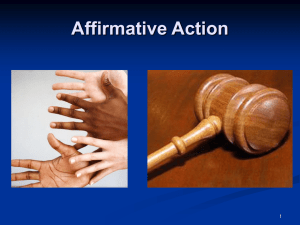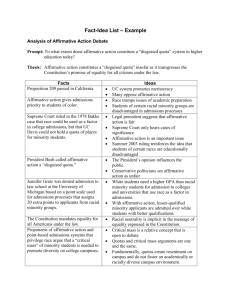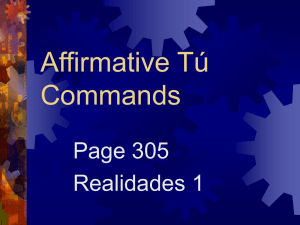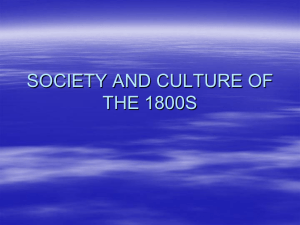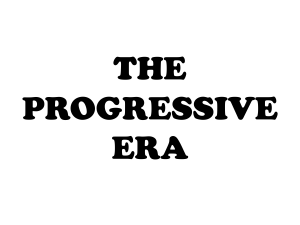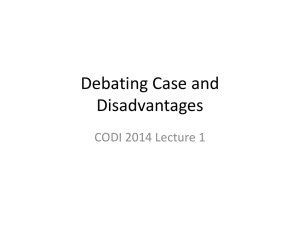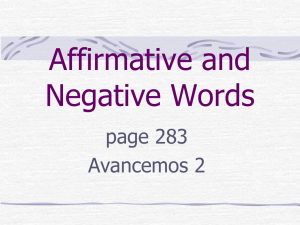Gratz v. Bollinger (2003)
advertisement
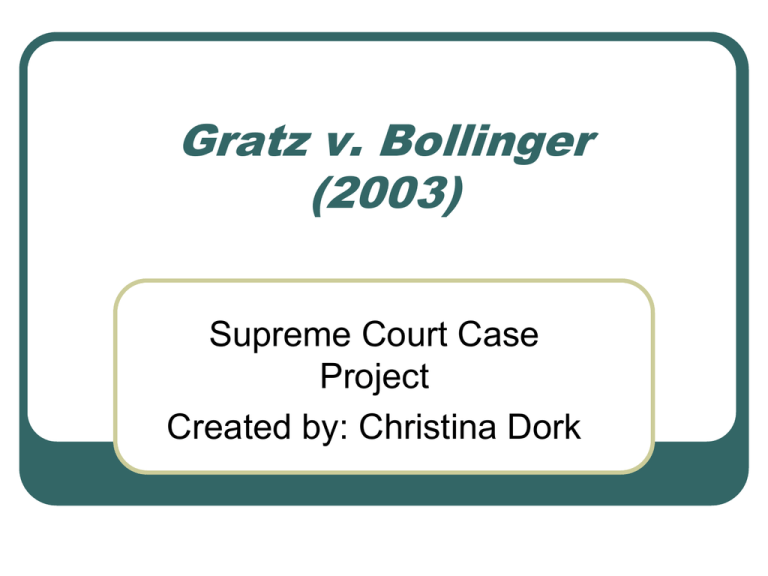
Gratz v. Bollinger (2003) Supreme Court Case Project Created by: Christina Dork Fun Fact The concept of affirmative action was started by President Johnson in a 1965 executive order which requires federal contactors to “take affirmative action to ensure that applicants are employed, and that employees are treated during employment, without regard to their race, creed, color, or national origin.” • Courtesy of: diversitysucks.com (So you can blame him ) Historical Background Fall 1995- Jennifer Gratz’s application to U of M’s LSA. Fall 1997- Patrick Hamacher’s application. Both are white residents of Michigan and were not accepted. The Center for Individual Rights contacted them and filed a lawsuit on their behalf in October 1997. Filed in the U.S. District Court for the Eastern District of Michigan against U of M, the LSA, James Duderstadt, and Lee Bollinger. Fought that the rights of Gratz and Hamacher to equal protection of the laws under the Fourteenth Amendment were being violated. U of M used a 150 point scale to rank all applicants, with 100 points needed to guarantee admission. An automatic 20 points were given to underrepresented ethnic group students (including African Americans, Hispanics, and Native Americans) However, a perfect SAT score was only worth 12 points. Legal Question “Does the University of Michigan’s use of racial preferences in the admissions process violate the Equal Protection Clause of the Fourteenth Amendment?” YES or NO The Decision Chief Justice William H. Rehnquist wrote, “because the University’s use of race in its current freshman admissions policy is not narrowly tailored to achieve respondents’ asserted compelling interest in diversity, the admissions policy violates the Equal Protection Clause.” The Decision (cont.) 6 votes for Gratz, 3 votes against • • • • • • • • • Rehnquist- wrote majority opinion Stevens- wrote a dissent O’Connor- wrote a concurrence Scalia- voted with the majority Kennedy- voted with the majority Souter- wrote a dissent, joined with Stevens Thomas- wrote a concurrence Ginsburg- wrote a dissent, joined with Souter Breyer- wrote a concurrence, joined with O’Connor Precedent June 2006- Parents v. Seattle, Meredith v. Jefferson • November 2008- A ballot to ban affirmative action goes out in Nebraska and Colorado • Programs trying to maintain diversity in schools by considering race are ruled unconstitutional (5-4) Nebraska bans it (+50%), but Colorado does not. June 2009- Ricci v. DeStefano • Exams were thrown out when few minority firefighters qualified for advancement. This act was ruled as violating Title VII of the Civil Rights Act of 1964 (5-4) These cases show that even after Gratz v. Bollinger, the U.S. population is still majorly split on whether affirmative action is constitutional or not. Public Support for the Decision Support • Affirmative action creates unfair advantages for minority students and creates a disadvantage for wellqualified Caucasian students. Oppose • Affirmative action allows a diverse and well-rounded learning environment while giving disadvantaged students a boost. Judgment and Justification I agree with the decision that U of M’s racial preference is unconstitutional. Giving minority students an automatic advantage is reverse discrimination. • e.g. Telling a Caucasian student that they were denied acceptance because they are not a minority is the same as telling an African American student that they were denied acceptance because they’re not white… Evidence: U.S. Constitution, Fourteenth Amendment, Equal Protection Clause • “Nor shall any State…deny to any person within its jurisdiction the equal protection of the laws.” Cartoons

